Sturisoma Panama: description, features of care and reproduction
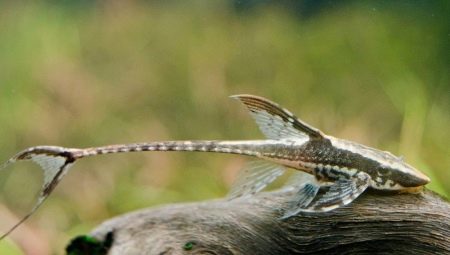
The aquarium fish with the exotic name Panamanian sturisoma resembles a graceful dragonfly in its appearance. This species belongs to the loricaria or chain catfish, and is found naturally in the warm rivers of South America. In Russia, unusual fish with an exotic appearance appeared about 20 years ago and quickly gained popularity among aquarists. Today, most of the individuals arriving from abroad are artificially bred on special farms in Southeast Asia. But this does not detract from the merits of the Panamanian sturisome as a pet for a home aquarium.

Characteristic
Description of the breed of aquarium fish Sturisoma Panamense allows you to fully appreciate the uniqueness of its external appearance. Panamanian sturisoma has a long, flattened body in the upper and lower parts, turning into a long tail. A small characteristic outgrowth can be observed ahead. The caudal fin has a forked shape with thin filamentous ends, the dorsal fin is similar to a sickle.
Panamanian sturisoma is characterized by a dull color, mixing red and yellow tones. A dark brown border extending from the eyes to the posterior fin, partly this shade passes to the dorsal region. The filamentous ends of the caudal fin are also colored, but not entirely, but in spots. On the light abdomen of a silvery-white hue, areas with more saturated brown and yellow shades are clearly visible.
The body color of females is dimmer. There are also differences in the shape of the head - here it is narrower, wedge-shaped. For Panamanian sturisoma, the location of the eyes in the frontal region is characteristic.This miniature catfish has bristles on the cheeks of males - rather dense, 1-6 mm long. Females are deprived of such decoration.
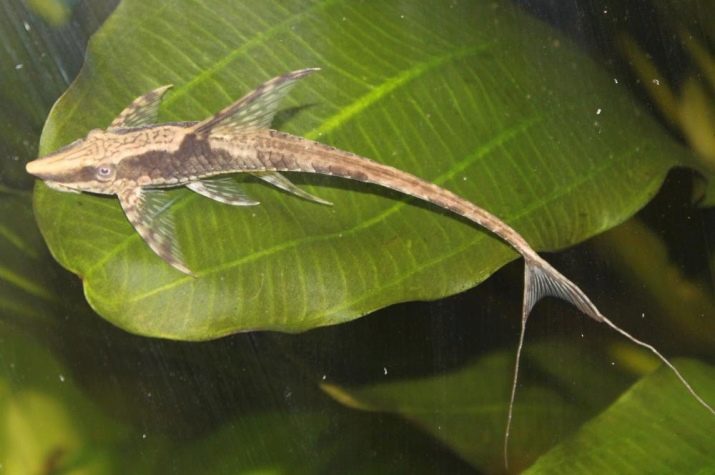
In an artificially created aquarium environment, adults of Sturisoma Panamense grow up to 18 cm.In nature, they are almost a third larger, can reach a body length of 26 cm. Sexual maturity occurs in fish at 18 months of age. In poor conditions of detention, with a lack of space or nutrition, male catfish may show a reverse development of secondary sexual characteristics, antennae appear only with good care. The lifespan of the Panamanian sturisoma in captivity is up to 10 years.
In the natural environment, fish feel good in warm fast-flowing rivers, they are found mainly in Panama and other South American states.
The main population is located in the riverbed with the name of Magdalena. It is here that an optimal environment is provided for them - good aeration, a sufficient amount of food.

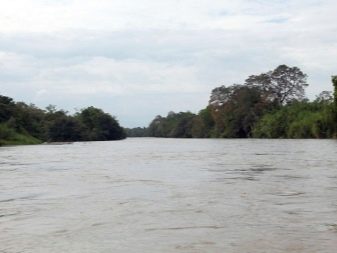
Content rules
In order to provide this type of catfish with optimal conditions of keeping, it is first of all necessary to purchase a spacious aquarium with a volume of 160-200 liters. It is better to start a Panamanian sturisoma for keeping in a species reservoir without any company. It will not be difficult for an experienced aquarist to provide fish with a comfortable environment. It shows its main activity at night, during the day, preferring to rest on decorative ornaments - snags, stones or on the bottom soil.
There should be 2-4 females for one sexually mature male in the aquarium. To decorate a habitat for a group of fish, you can use hard-leaved aquatic plants, mosses, stone castles, treated with special compositions of driftwood. Water must be filtered, saturated with oxygen, using a mechanical-biological filter, it is possible to ensure the formation of an underwater current, in which sturisomes feel as comfortable as possible.
Sturisoma is capable of cleaning vegetation from biological deposits. She is quite active, effectively coping with these tasks.
It is worth paying attention to the fact that the fish are quite large, and it is better to plant hard-leaved plant varieties in the aquarium. They do not need intense lighting, a moderate backlight is enough.
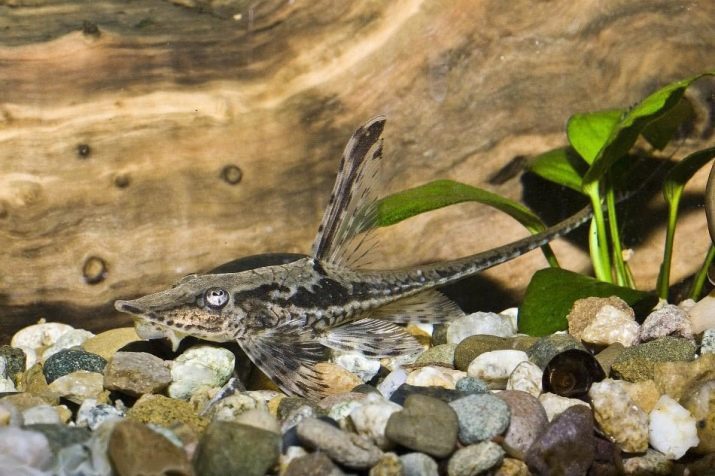
Aquarium care
Water for keeping Sturisoma Panamense aquarium fish must meet certain parameters:
- the optimum temperature of the environment is from +24 to +28 degrees Celsius;
- acidity indices in the range of 6.5-7.0 pH;
- hardness level up to 25 dGH.
To maintain an optimal microclimate in the aquarium, it is necessary to regularly clean the bottom surface. Replacement of water is carried out in parts, no more than 25% at a time, with a frequency of at least 1-2 times a week. With abundant reproduction of unicellular ciliates in a liquid medium, fish may feel bad. To maintain the good condition of the ecosystem, complete cleaning is periodically carried out.
When creating an environment for keeping fry, it is important to ensure high-quality soil cleaning, maintaining optimal water purity with the required parameters - it is achieved by frequent changes in small portions.
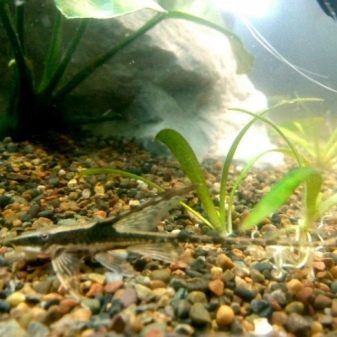
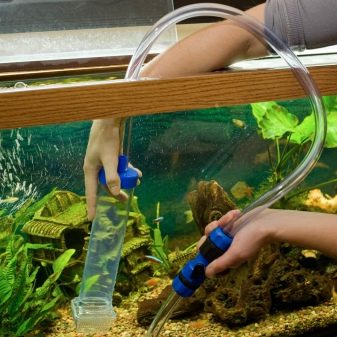
What to feed?
Organizing food for Panamanian sturisoma is easy. A significant part of her diet, more than 50%, is plant foods. Cucumbers, peas, lettuce, spinach, nettle, zucchini will do. Heat treatment may be required in advance. So, lettuce leaves should be kept in the microwave for 20 seconds before serving, and the zucchini should be subjected to a freeze and thaw cycle. Food can be fortified with special industrial flakes and tablets.
Abundant nutrition is not required - if the recommended amount of food is exceeded, its remnants will pollute the environment. To feed the fry, they use mainly live food - bloodworms, brine shrimp, or special ready-made rations; scalded cabbage and lettuce leaves can be given. Promotes good development of minced veal, chopped shrimp fillets. Young growth is slow, reaching a body length of 8-10 cm only at 2.5 years. A dense, well-stuffed belly will become an indicator of good nutrition.
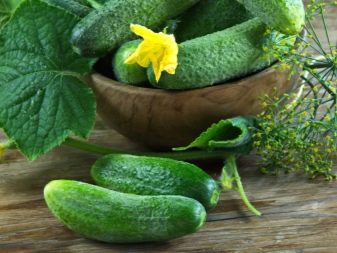

The volumes of animal food in the case of feeding Panamanian sturisome reach 30% in the diet. You can give daphnia, corotra, tubifex. When keeping in an aquarium with other catfish, it is imperative to pay attention to a sufficient amount of incoming food - more active fish can leave neighbors without food.
Spirulina is the preferred dry food. It is very important for proper growth and development of a variety of food received by the inhabitants of the aquarium.
In winter, the necessary nutrition is provided with the help of ready-made flakes and tablets - this saves the owner from any difficulties with the selection of high-quality plant food.
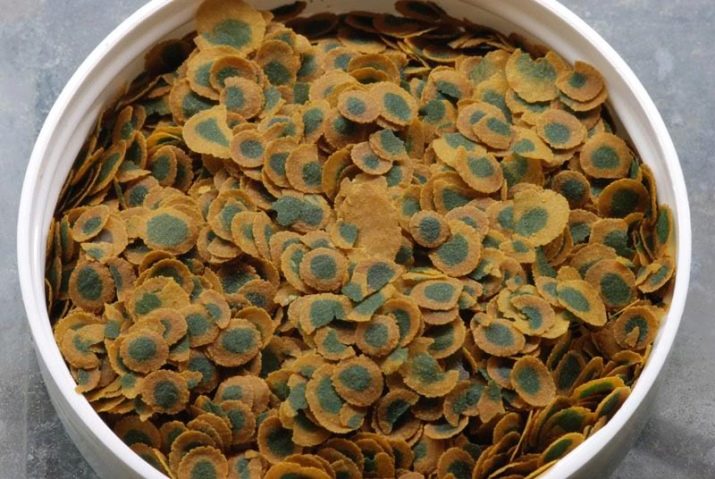
Breeding
To increase the chances of successful spawning, sexually mature sturisomes over 18 months of age should receive the maximum amount of plant food. Favorably affects their reproduction and correct softening, maintaining the optimal acidity of the water. Fish spawn at night, during the peak of their physiological activity. First, sturists clean and prepare the place for laying eggs.
Usually, the wall of the aquarium or the surface of a smooth stone located in the flow area is chosen as a nest for spawning. Before clutching, the male and female perform a mating dance. A clutch of 50-150 eggs is laid at a time, they are white and slightly yellow in color, the correct shape. The duration of the throw is 30-240 minutes.
Further, the male fertilizes the eggs, and keeps a watch near them. Females show exclusively gastronomic interest in future offspring, so he drives them away. Even in the presence of several clutches and one male, he performs his functions of protecting eggs regularly.
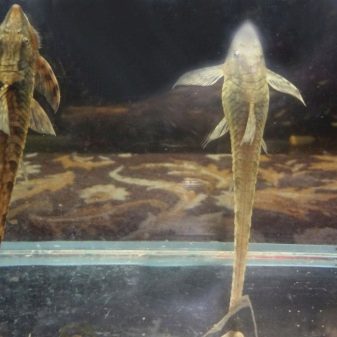

It takes 5-10 days before the fry hatch; after birth, they consume food from the gastric sac for 48 hours. Then they are transferred to other types of food, caught and transferred to a separate aquarium equipped with snags as a refuge.
Having studied the nuances of keeping and breeding catfish of the Panamanian sturisom species, you can provide them with the best conditions for living in an artificially created environment.
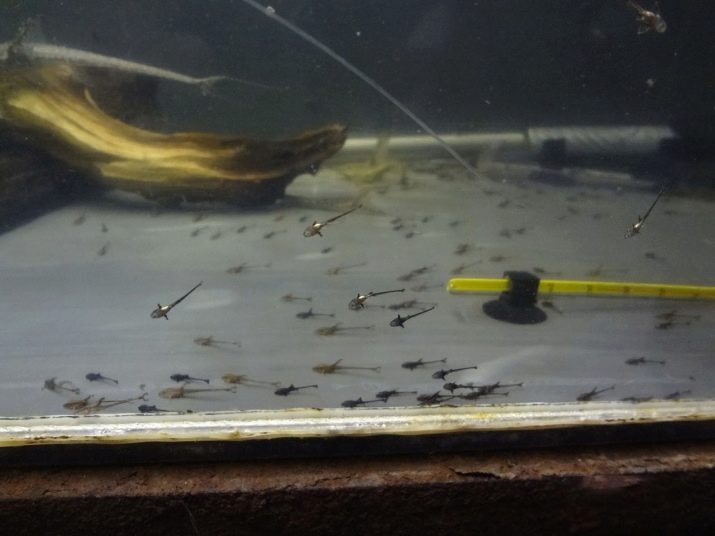
Compatibility with other fish
The Panamanian sturisome has fairly good compatibility with other breeds of aquarium fish. The catfish themselves are non-aggressive, rather peaceful towards representatives of other species. Conflicts and even fights can arise with their relatives. It is not recommended to add them to larger and stronger fish - sturisomes are unable to resist them, therefore they will regularly remain without the food they need.
With aquarium keeping, this species is insensitive to the presence of neighbors. Fish can be kept alone, by heterosexual groups, families. In the presence of smaller and nimble neighbors, it is imperative to select species that prefer to live near the surface. In this case, the proximity to the sturisoma, which prefers bottom habitat, will not be difficult for all inhabitants of the artificial reservoir.
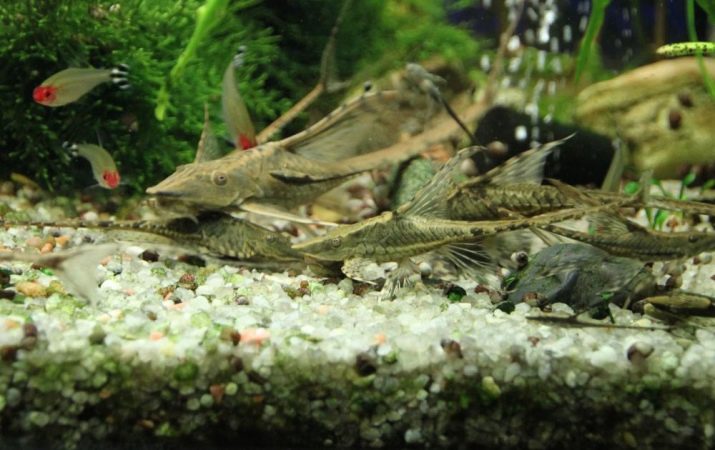
Possible problems
What to do if Panamanian sturisoma behaves atypically, becomes too lethargic or rushes about in the aquarium? First of all, you should study the possible influence of external factors. For example, a fish may exhibit uncharacteristic lethargy after contact with bubbles of methane or its derivatives. An increased concentration of nitrites, nitrates, ammonia in the water is fatal for sturisomas - that is why they feel better in new aquariums than when replanted into a container with an established environment.
If activity decreases, the filter should also be checked for cleanliness. If it does not provide sufficient water flow, it is urgent to clean it.
When keeping sturis, you need to protect them from diseases. The most dangerous is ichthyophthiriosis, in which the body seems to be covered with semolina. White spots are manifestations of ciliates parasitizing on the body of fish. The prevention of this phenomenon is to maintain a high acidity of the water.
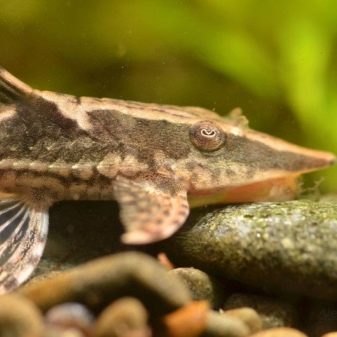
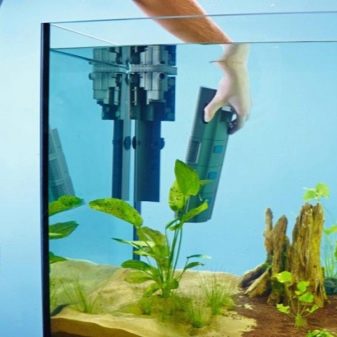
If the catfish shows increased anxiety, rushes about in the aquarium, there can be several reasons for such strange behavior at once - from oxygen deficiency to excessive softness of the environment. Replacing about 20% of water, reducing their concentration in one container will help improve the well-being of pets. But the manifestation of anxiety can also be associated with the preparation for spawning. It is worth carefully observing the behavior of the inhabitants of the aquarium, making measurements of the indicators of their habitat.
For more information about the features of Panamanian sturisoma, see the next video.








